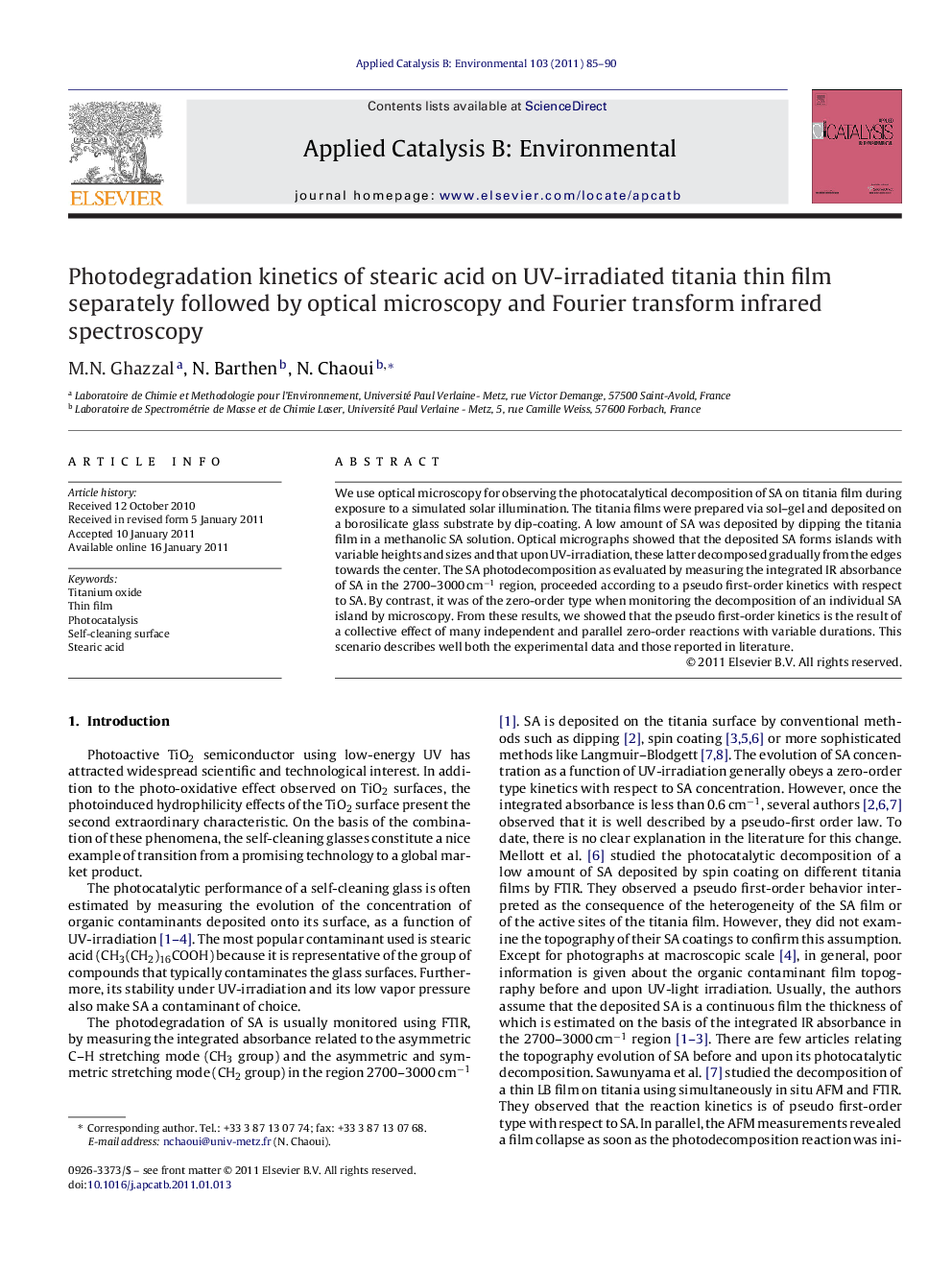| Article ID | Journal | Published Year | Pages | File Type |
|---|---|---|---|---|
| 46996 | Applied Catalysis B: Environmental | 2011 | 6 Pages |
We use optical microscopy for observing the photocatalytical decomposition of SA on titania film during exposure to a simulated solar illumination. The titania films were prepared via sol–gel and deposited on a borosilicate glass substrate by dip-coating. A low amount of SA was deposited by dipping the titania film in a methanolic SA solution. Optical micrographs showed that the deposited SA forms islands with variable heights and sizes and that upon UV-irradiation, these latter decomposed gradually from the edges towards the center. The SA photodecomposition as evaluated by measuring the integrated IR absorbance of SA in the 2700–3000 cm−1 region, proceeded according to a pseudo first-order kinetics with respect to SA. By contrast, it was of the zero-order type when monitoring the decomposition of an individual SA island by microscopy. From these results, we showed that the pseudo first-order kinetics is the result of a collective effect of many independent and parallel zero-order reactions with variable durations. This scenario describes well both the experimental data and those reported in literature.
Graphical abstractFigure optionsDownload full-size imageDownload as PowerPoint slideResearch highlights► Stearic acid (SA) deposited on TiO2 film forms islands of variable sizes and heights. ► Upon UV light, overall SA decomposes according to a pseudo first-order kinetics. ► However, the decomposition of an individual SA island is of the zero-order type. ► Collective effect of islands disappearance explains the pseudo first-order kinetics.
